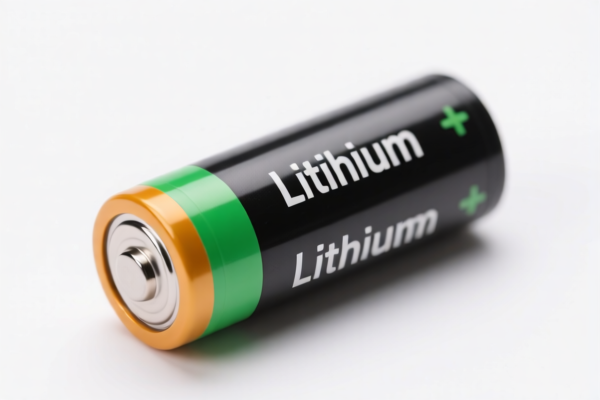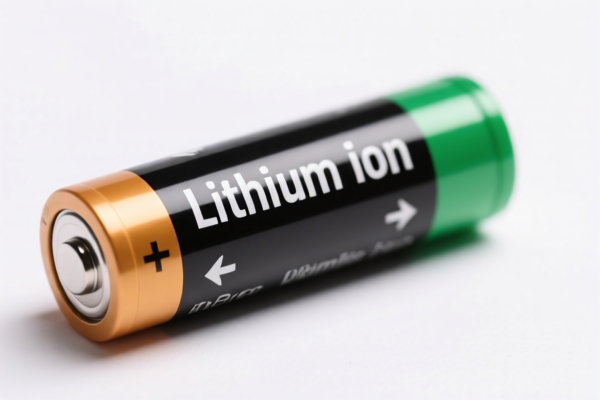| HS Code | Official Doc | Tariff Rate | Origin | Destination | Effective Date |
|---|---|---|---|---|---|
| 8507600010 | Doc | 33.4% | CN | US | 2025-05-12 |
| 8507600020 | Doc | 33.4% | CN | US | 2025-05-12 |
| 8467210010 | Doc | 31.7% | CN | US | 2025-05-12 |
| 8467990190 | Doc | 55.0% | CN | US | 2025-05-12 |
| 3707906000 | Doc | 55.0% | CN | US | 2025-05-12 |




Li-ion Replacement Batteries for Power Tools
Li-ion (Lithium-ion) replacement batteries are power sources designed to substitute original batteries in cordless power tools. They offer advantages in weight, performance, and longevity compared to older battery technologies like Nickel-Cadmium (NiCd) and Nickel-Metal Hydride (NiMH).
Material Composition
- Cathode: Typically Lithium Cobalt Oxide (LiCoO2), Lithium Manganese Oxide (LiMn2O4), Lithium Iron Phosphate (LiFePO4), or Nickel Manganese Cobalt (NMC) chemistries. The cathode material significantly impacts the battery's voltage, energy density, and safety characteristics.
- Anode: Primarily Graphite.
- Electrolyte: A lithium salt in an organic solvent, facilitating ion movement between the cathode and anode.
- Separator: A porous membrane preventing physical contact between the cathode and anode while allowing ion transport.
- Casing: Usually a durable plastic polymer, providing protection and structural integrity.
- Battery Management System (BMS): An electronic circuit regulating charging, discharging, temperature, and overall battery health.
Purpose & Function
The primary purpose of a Li-ion replacement battery is to provide portable power to cordless power tools, enabling operation without a direct connection to an electrical outlet.
- Energy Storage: Li-ion batteries store electrical energy through reversible chemical reactions.
- Power Delivery: They deliver consistent voltage and current to the tool, powering the motor and other components.
- Rechargeability: Li-ion batteries can be recharged hundreds or even thousands of times, making them a cost-effective and environmentally friendly power solution.
- Voltage Regulation: The BMS ensures a stable voltage output, protecting the tool from damage and optimizing performance.
Usage Scenarios
Li-ion replacement batteries are used in a wide variety of cordless power tools, including:
- Drills & Drivers: Providing power for screw driving and hole drilling.
- Saws: Powering circular saws, reciprocating saws, jigsaws, and more.
- Impact Wrenches: Delivering high torque for tightening and loosening fasteners.
- Grinders & Sanders: Powering abrasive tools for cutting, grinding, and polishing.
- Landscaping Tools: Operating chainsaws, hedge trimmers, leaf blowers, and other outdoor equipment.
- Lighting: Providing power for cordless work lights.
Common Types
Li-ion batteries for power tools are categorized by voltage and capacity (measured in Ampere-hours - Ah). They are often grouped into series to achieve higher voltages.
- Voltage: Common voltages include 12V, 18V, 20V (often 18V nominal), 40V, and 60V. Voltage must match the tool's requirements.
- Capacity (Ah): Higher Ah ratings provide longer run times. Common capacities range from 1.5Ah to 6.0Ah or higher.
- Battery Chemistry:
- LiCoO2 (Lithium Cobalt Oxide): High energy density, commonly used in older designs, but with lower thermal stability.
- LiMn2O4 (Lithium Manganese Oxide): Good thermal stability and safety, moderate energy density.
- NMC (Nickel Manganese Cobalt): Excellent balance of energy density, power, and safety. Most common chemistry in modern power tool batteries.
- LiFePO4 (Lithium Iron Phosphate): Highest safety and longest cycle life, but lower energy density and power.
- Compatibility: Batteries are often brand-specific (e.g., DeWalt, Makita, Milwaukee) and may not be universally interchangeable. Some aftermarket batteries offer cross-compatibility.
The declared goods are lithium-ion replacement batteries intended for use in power tools. These batteries serve as the primary power source for cordless tools.
The following HS codes are relevant based on the provided information:
- 8507600010: Electric storage batteries, including separators therefor, whether or not rectangular (including square); parts thereof: Lithium-ion batteries Of a kind used as the primary source of electrical power for electrically powered vehicles of subheadings 8703.40, 8703.50, 8703.60, 8703.70 or 8703.80. This code specifically covers lithium-ion batteries designed as the main power source for electric vehicles (as defined by the specified subheadings). While the declared goods are for power tools, this code is included as it defines lithium-ion battery classification.
- 8507600020: Electric storage batteries, including separators therefor, whether or not rectangular (including square); parts thereof: Lithium-ion batteries Other. This code covers lithium-ion batteries that do not fall under the definition of being specifically for electric vehicles as outlined in 8507600010. This is the more likely applicable code for power tool batteries.
- 8467210010: Tools for working in the hand, pneumatic, hydraulic or with self-contained electric or nonelectric motor, and parts thereof: With self-contained electric motor: Drills of all kinds Rotary: Battery powered. This code applies to the tool itself if it is a battery-powered drill. It does not cover the battery as a separate component.
Tax Rate Information:
- 8507600010 & 8507600020: Both codes have a base tariff of 3.4%, no additional tariff currently, but a 30.0% additional tariff will be applied after April 2, 2025, resulting in a total tariff of 33.4%.
- 8467210010: Has a base tariff of 1.7%, no additional tariff currently, but a 30.0% additional tariff will be applied after April 2, 2025, resulting in a total tariff of 31.7%.
Important Note:
The applicable tariff for the battery will depend on whether it is considered specifically for electric vehicles (as defined by the subheadings listed in 8507600010). If the battery is solely for power tools, 8507600020 is the appropriate code.
Customer Reviews
No reviews yet.